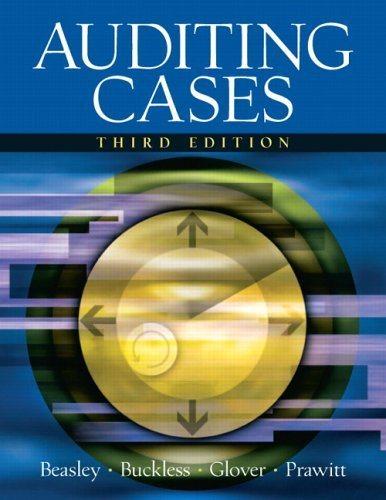
Predetermined overhead rate Class Problem Cardell Company applies overhead based on direet labor costs. The company estimates annual overhead costs will be $760,000 and annual direct labor costs will be $950,ooo. During February, Cardell works on two jobs: A16 and B17. Summar Manufacturing Costs Incurred Purchased $54,00o of raw materials on account. Factory labor $76,o00, plus $4.000 employer payroll taxes. Manufacturing overhead exclusive of indirect materials and indirect labor $59,8o0. data concerning these jobs are as follows Assignment of Costs Direct materials: Job A16 $27,000, Job B17 $21,000 Indirect materials: $3,000 Direct labor: Indirect labor: Job A16 $52,000, Job B17 $26,000 $2,000 (a) Compute the predetermined overhead rate. (b) What was the amount of under-or overapplied manufacturing overhead? rede Ouevy 2a q50, ooo 307, = 760, ooo Waterways Continuing Problem WCP 15 Waterways has two major public-park projects to provide with comprehensive irrigation in one of its service locations this month. Job J57 and Job K52 involve 15 acres of landscaped terrain which will require special-order sprinkler heads to meet the speci- fications of the project. Using a Job cost system to produce these parts, the following events occurred during December 2016 Raw materials were requisitioned from the company's inventory on December 2 for $5,061; on December 8 for $1,059: and on December 14 for $3,459. In each instance, two- thirds (2/3) of these materials were for J57 and the rest for K52 Six time tickets were turned in for these two projects for a total amount of 18 hours of work. All the workers were paid $16.50 per hour. The time tickets were dated December 3, December 9, and December 15. On each of those days, 6 labor hours were spent on these jobs, two-thirds (2/3) for J57 and the rest for K52. The predetermined overhead rate is based on machine hours. The expected machine hour use for the year is 2,112 hours, and the anticipated overhead costs are $840,576 for the year. The machine were used by workers on projects K52 and 157 on December 3,9 and 15. Six machine hours were used for project K52 (2 each day), and 8.5 machine hours were used for project J57 (2.5 the first day and 3 each of the other days). Both of these special orders were completed on December 15, producing 237 sprinkler heads for J57 and 142 sprinkler heads for K52. Additional job order activities during this period of time included: Dec. 1 Purchased raw materials from Durbin Supply Company on account for $53,200. Dec. 2 Issued $40,000 of direct materials from the company's inventory to jobs other than K52 and J57 and $3,000 of indirect materials Dec. 12 Paid Waterways' factory salaries and wages in the amount of $65,000. Dec. 13 Paid the factory's water bill of $9,000. Dec. 18 Transferred $50,000 of costs from other completed jobs to finished goods. Dec. 21 Paid the factory's electric bill of $12,000 for Waterways factory Dec. 31 Made adjusting entries for the factory that included accrued property taxes of $12,000, prepaid insurance of $8,800, and accumulated depreciation of $16,000. (a) Set up the job cost sheets for Job No. J57 and Job No. K52. Determine the total cost for each manufacturing special order for these jobs. (Round unit cost to nearest cent.) (b) Journalize the activities from these job cost sheets in the general journal. Also jour- nalize the other costs that occurred during this period of time. whether overhead has been under/over applied and make the adjusting entry. driver for the overhead for the job of installing the irrigation system and why? (c) Assuming that Manufacturing Overhead has a debit balance of $3,600, determine d) Why would Waterways choose machine hours as the cost driver for the overhead rather than direct labor cost? What would Waterways be likely to choose as the cost








